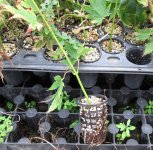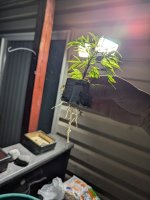Canada Bonsai
Chumono
- Messages
- 644
- Reaction score
- 2,236
Just a follow-up question - I understand your approach is driven by maximizing volume of individual cuttings*, but if you were more interested in maximizing the strength of the individual cuttings (even if it meant fewer total cuttings) would you consider taking cuttings that are 2 or 3 nodes instead of a single node?
Would the cutting have more strength and momentum to grow forward and faster if it had more nodes?
Good question - it's a hard one to answer, though!
I have done side-by-side studies with a few Acer palmatum different cultivars and a few others species like Chinese Elms, Prunus mume, and Callicarpa to name a few, and I never noticed any differences in terms of rooting success-rate or growth post-rooting. That said, since before I can remember I have been working in environments where I was controlling water, air flow, humidity, etc. very closely.
I suppose that if some variable in your propagation set-up was lacking and this happened to be made up for by whatever it is that some extra length in your cutting might bring to the table, then perhaps it could be helpful in that circumstance. If this sounds vague it is my intention that it be so because it's not entirely clear to me what the extra length or extra internode does to benefit the cutting (scientifically I mean, because its certainly easy to speculate).















